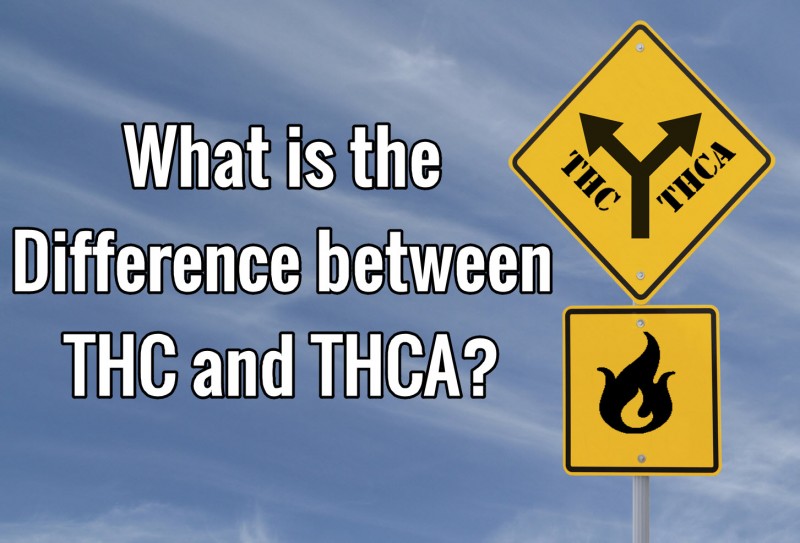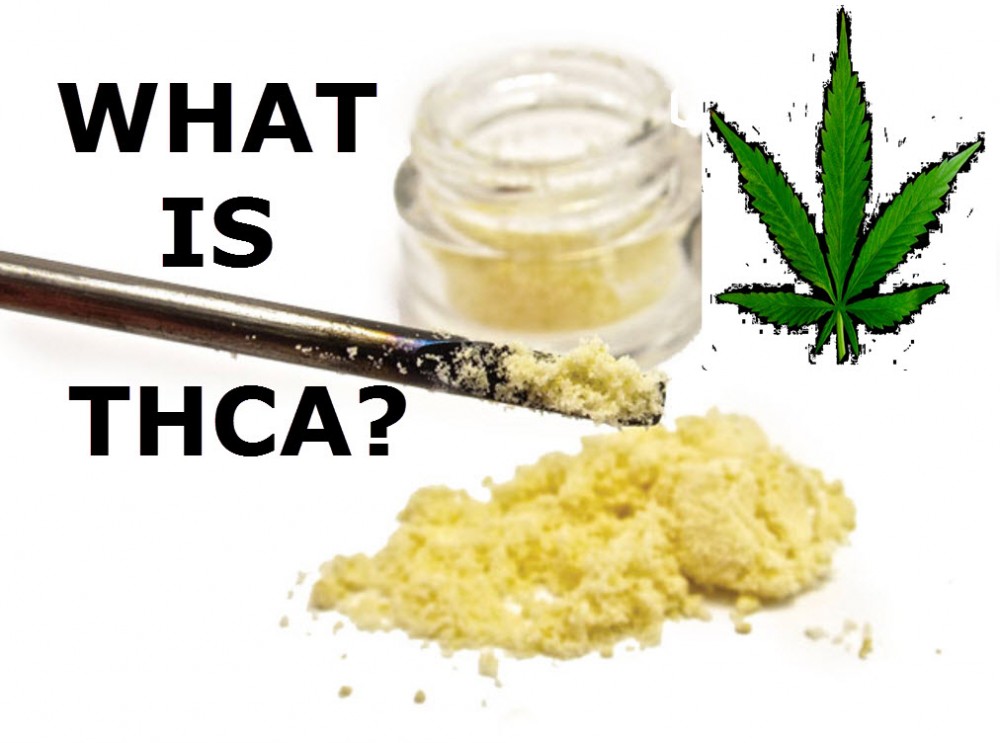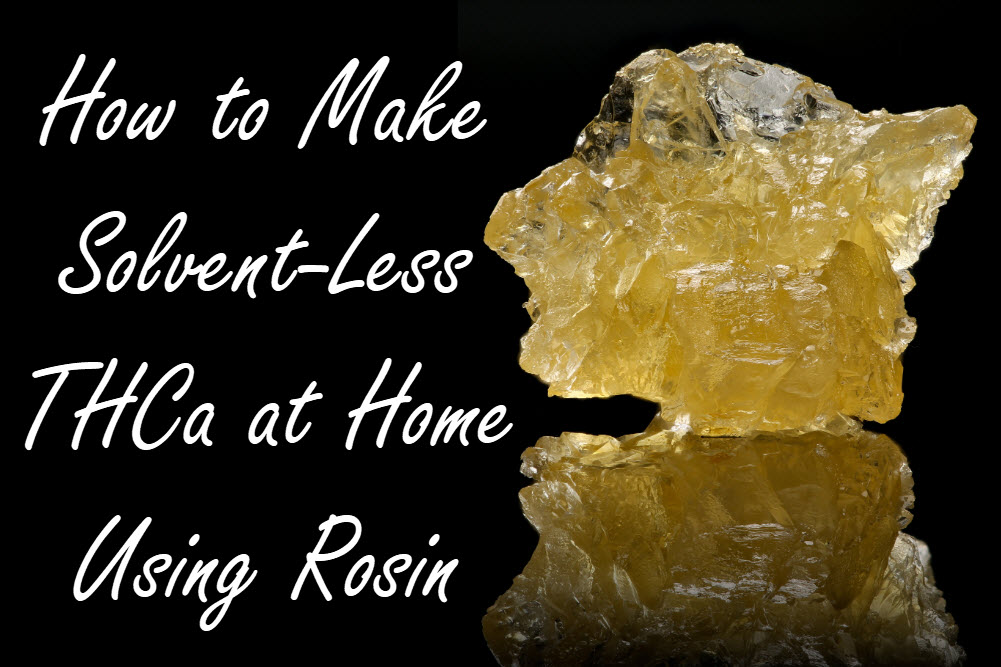What’s the difference between THC and THCA?

Most of us associate the cannabis plant with THC or tetrahydrocannabinol, the most abundant phytochemical found in it. It’s the reason we know about the endocannabinoid system at all. We also know it’s what’s responsible for cannabis’ psychoactive properties. But few would probably know that before THC can be smoked, vaped or ingested for its intoxicating properties, it actually starts out as THCA, tetrahydrocannabinolic acid. In fact, most of the plant’s cannabinoids, like CBD (cannabidiol), CBG (cannabigerol), and THCV (tetrahydrocannabivarin) all start out as acids when the plant is still in its raw form. This is why you can’t get ‘high’ if you eat freshly picked marijuana buds.
So how does THCA become THC?
Simple, through the application of light and/or heat known as decarboxylation. You’ve probably heard of it before. It’s the same process needed to make edibles. What happens is when heat is applied to cannabis in its raw form, the carboxylic acid group of atoms in THCA are removed, converting them into molecules and altering its chemical structure. This process allows it to fit into the CB1 receptors that are found in the central nervous system, which then results in the mind/body-altering effects we commonly associate with THC.
Here are some common decarboxylation methods used to convert THCA into THC:
Oven-baking - Probably the method most of us are familiar with. Before cannabis can be added to butter or oil to make edibles or infusions, it is ground up and spread evenly across a parchment-lined baking sheet and baked for 30 to 90 minutes at 230 degrees Fahrenheit.
Smoking - While it may be the most common method, it’s certainly not the most efficient for converting THCA to THC due to the rapid conversion and high degree of heat. It also doesn’t allow all of the THCA to convert, so look into other methods before considering this one.
Room temperature - Probably the easiest method but will take the longest. When placed in olive oil and left at room temperature, it should take roughly 10 days at 77 degrees Fahrenheit, with 22 percent of THCA converted to THC. You can also use an ethanol extraction for an increased amount of THCA converted at roughly 67 percent, in the same conditions.
Vaporizing - The most efficient way to decarboxylate ground buds due to the steady, low heat being applied. Even more efficient is using vape pens, which uses already decarboxylated cannabis distillate.
Cannabis concentrate - When THCA comes in its isolated crystalline form, it can be ‘dabbed.’ THCA in its pure form is stripped of its terpenes and flavonoids. However, many producers add these back, allowing users to benefit from the entourage effect.
If you’re looking to avoid cannabis’ psychoactive effects and only want to consume THCA, and its benefits, here are some ways of consuming it:
Juicing - Place raw, fresh cannabis leaves into a juicer to extract the plant’s liquid to produce a highly concentrated juice. For a more palatable way of consuming it, place the leaves in a blender with other ingredients like bananas and other fruit and blend until desired smoothness. Juicing will extract the most THCA from the plant’s leaves.
Transdermal patches - Best for those who want a low-dose of THCA; these are applied to the veinous areas of the body, like the inside of the wrist or the tops of the feet. Effects last up to 12 hours.
Tinctures or drops - Drops are taken sublingually (under the tongue) or used topically. Many tinctures use a carrier oil, like coconut, that are easy to digest and can be absorbed rapidly. They’re easy to travel with and easy to dose.
The benefits of THCA:
While THCA won’t bind with CB1 and CB2 receptors, it’s believed to act as an inhibitor to COX-1 and COX-2 enzymes, making it a viable option for battling inflammation and pain. Some experts also believe it could boost levels of the endocannabinoid 2-Ag , which helps modulate a variety of health functions.
Over the years, a number of studies have been done on THCA’s effects, including:
May 2011 - A study was done on its anti-inflammatory effects, particularly on its interference to the production of prostaglandins, which are mediators in the inflammatory process.
June 2012 - A study showed that THC and THCA protect dopaminergic neurons against cell death, resulting in neuroprotective and antioxidant properties.
July 2013 - A study published by the British Pharmacological Society suggested that THCA may be effective in treating nausea and suppressing vomiting.
July 2017 - A study recommended that, for the treatment of Irritable Bowl Disease, THCA should be used instead of CBD. It was found to have stronger anti-inflammatory properties in treating Crohn’s and ulcerative colitis.
December 2017 - According to a study, THCA demonstrates potent neuroprotective activity and has potential for the treatment of Huntington’s disease and other neurodegenerative and neuroinflammatory diseases.
WHAT IS THCA AND HOW IS IT PRODUCED, READ MORE..
WHAT IS THCA AND WHY IS IT IMPORTANT, CLICK HERE.








